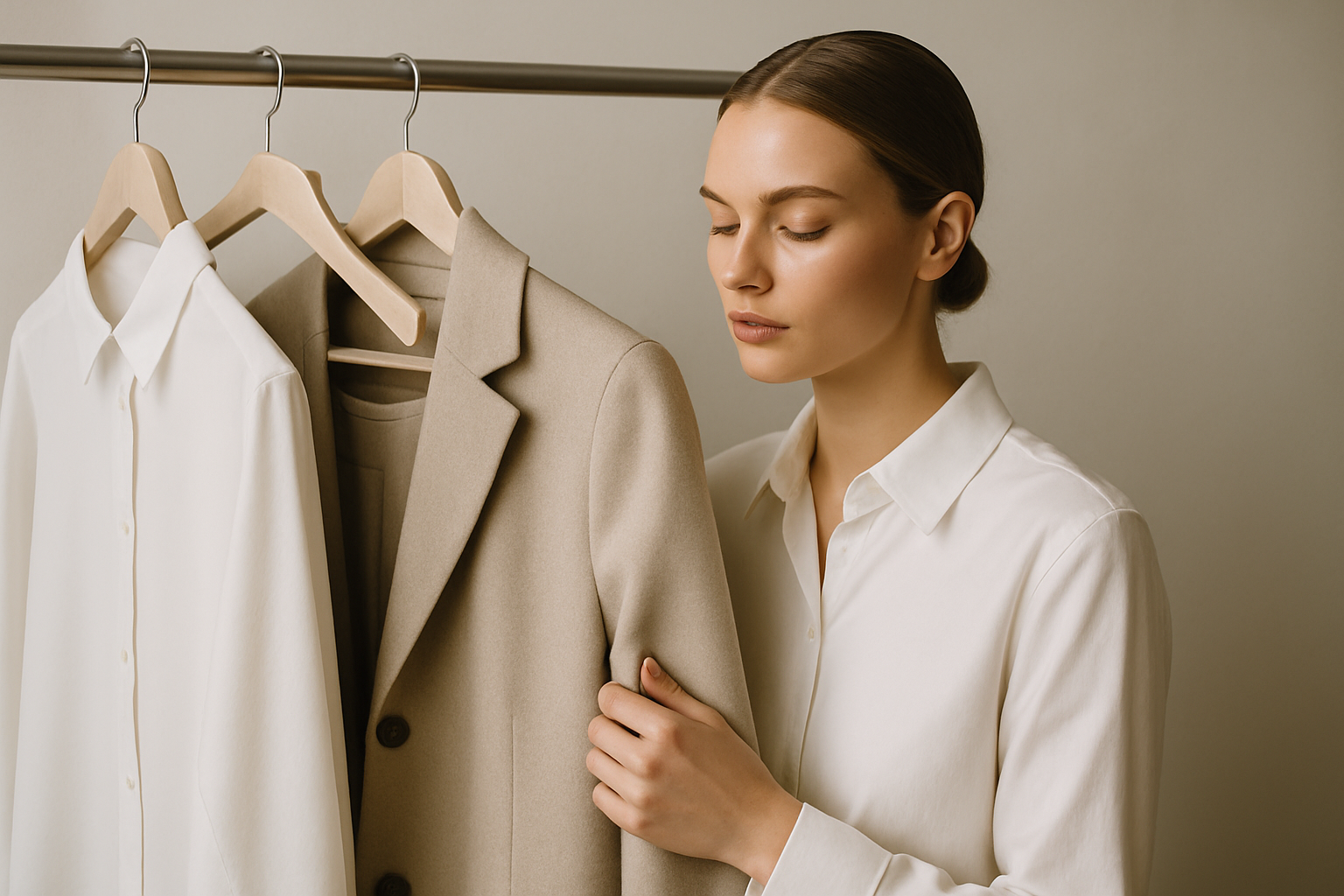Chromophobia: The Surprising Trend of Neutral-Only Wardrobes
In a world awash with vibrant hues and bold patterns, a curious trend has emerged in the fashion landscape: chromophobia. This fear of color has given rise to a growing number of style enthusiasts embracing an entirely neutral wardrobe. From beige to gray, these monochromatic mavens are redefining minimalism and challenging our perceptions of personal style. But what drives this aversion to color, and how is it reshaping the fashion industry?

Historical Context of Color Aversion
While the current neutral-only trend might seem novel, color aversion in fashion has historical precedents. In the early 20th century, modernist architects and designers championed minimalism, favoring stark whites and grays. This aesthetic influenced fashion, with designers like Coco Chanel popularizing the little black dress. Today’s chromophobia trend can be seen as a contemporary interpretation of these minimalist ideals, adapted for the modern wardrobe.
The Psychology Behind Chromophobia in Fashion
Psychologists suggest that the appeal of a neutral-only wardrobe might stem from a desire for control and simplicity in an increasingly chaotic world. By limiting color choices, individuals reduce decision fatigue and create a sense of order in their daily lives. Moreover, neutral tones are often associated with professionalism and maturity, appealing to those seeking to project a composed and sophisticated image.
Impact on the Fashion Industry
The rise of chromophobia has not gone unnoticed by fashion brands. Many have responded by expanding their neutral offerings, creating entire collections dedicated to shades of beige, gray, and white. This shift has led to innovations in textile development, with designers focusing on texture and subtle variations in tone to add interest to monochromatic pieces. The trend has also influenced marketing strategies, with brands adopting more muted color palettes in their advertising campaigns.
Styling a Neutral-Only Wardrobe
Creating a compelling look with a limited color palette requires a focus on silhouette, texture, and layering. Fashionistas embracing chromophobia often play with proportions, combining oversized and fitted pieces to create visual interest. Textures become crucial, with materials like silk, wool, and leather adding depth to monochromatic outfits. Accessories, while still neutral, can provide contrast through metallic finishes or subtle patterns.
The Environmental Angle
Interestingly, the chromophobia trend aligns with sustainable fashion principles. A wardrobe composed of versatile, neutral pieces tends to be more timeless and less susceptible to passing fads. This approach can lead to reduced consumption and a more sustainable approach to personal style. Additionally, neutral garments are often easier to care for and maintain, potentially extending their lifespan.
Critiques and Countertrends
Not everyone is embracing the neutral-only movement. Critics argue that it stifles creativity and individual expression. In response, some fashion enthusiasts are pushing back with “chromophilia,” celebrating bold colors and patterns as a form of rebellion against the neutral norm. This tension between color aversion and color embrace is creating an interesting dynamic in the fashion world, driving innovation on both ends of the spectrum.
Mastering the Art of Neutral Dressing
• Invest in quality basics: The foundation of a neutral wardrobe is high-quality staples that will stand the test of time.
• Play with texture: Incorporate different fabrics and finishes to add depth to monochromatic looks.
• Focus on fit: With color off the table, the cut and fit of garments become even more crucial.
• Experiment with layering: Combine different shades of neutrals to create a sophisticated, tonal look.
• Accessorize thoughtfully: Use jewelry, bags, and shoes in metallic or subtle patterns to add interest.
• Don’t forget skincare: A flawless complexion becomes your best accessory in a neutral-only wardrobe.
As the chromophobia trend continues to evolve, it challenges us to rethink our relationship with color in fashion. Whether viewed as a minimalist statement, a psychological coping mechanism, or a sustainable approach to style, this movement is leaving an indelible mark on the fashion landscape. As we move forward, the interplay between neutral devotees and color enthusiasts will undoubtedly shape the future of personal style, pushing the boundaries of how we express ourselves through clothing.





